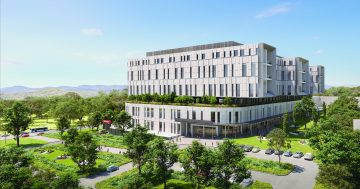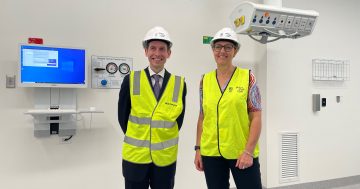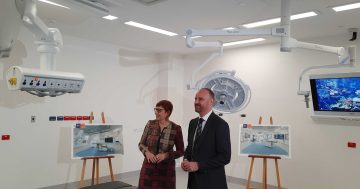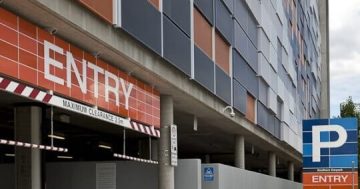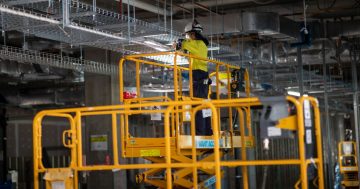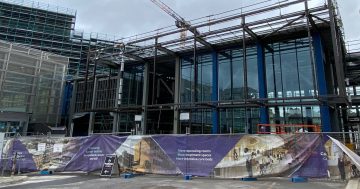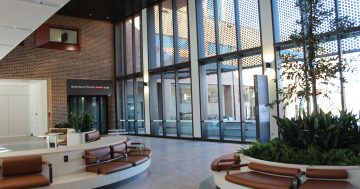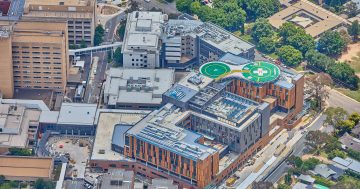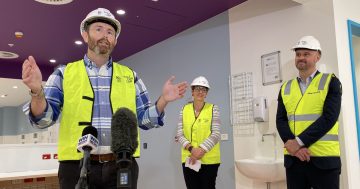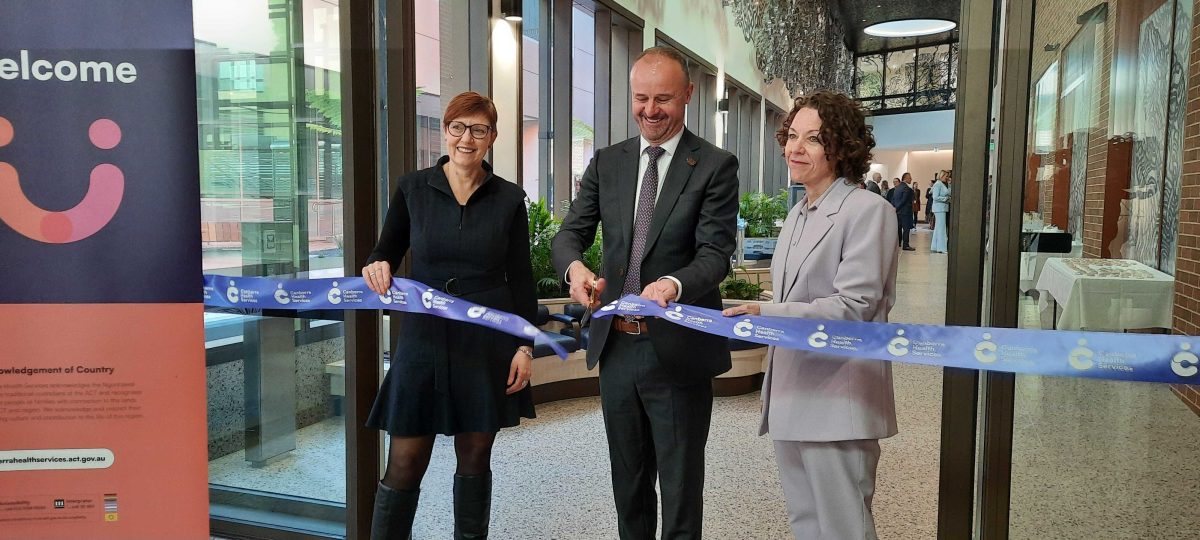
Canberra Hospital milestone: Health Minister Rachel Stephen-Smith, Chief Minister Andrew Barr and Acting Canberra Health Services CEO Janet Zagari do the honours. Photo: Ian Bushnell.
The new $640 million Critical Services Building at the Canberra Hospital will go live on 17 August with the opening from 7:30 am of the Emergency Department and other areas throughout the day.
While an official opening ceremony marked the milestone today at the hospital, the moving of equipment, staff and patients from the old facilities would be a progressive exercise starting on 9 August through to 23 August.
However, all clinical service areas will make the move into what will be known as Building 5 and commence services on the 17th.
The old ED will no longer operate from that day; the Intensive Care Unit and the five other surgical and medical inpatient units will be moved progressively throughout the day.
Operating theatres and cardiac catheterisation labs will open from 7:30 am for emergency procedures, as will medical imaging and the helipad.
Most elective procedures will start on 19 August, although some will already be underway from 13 August.
About 160 patients will be moved into the new building throughout the day on the 17th.
Reception staff moved in last month.
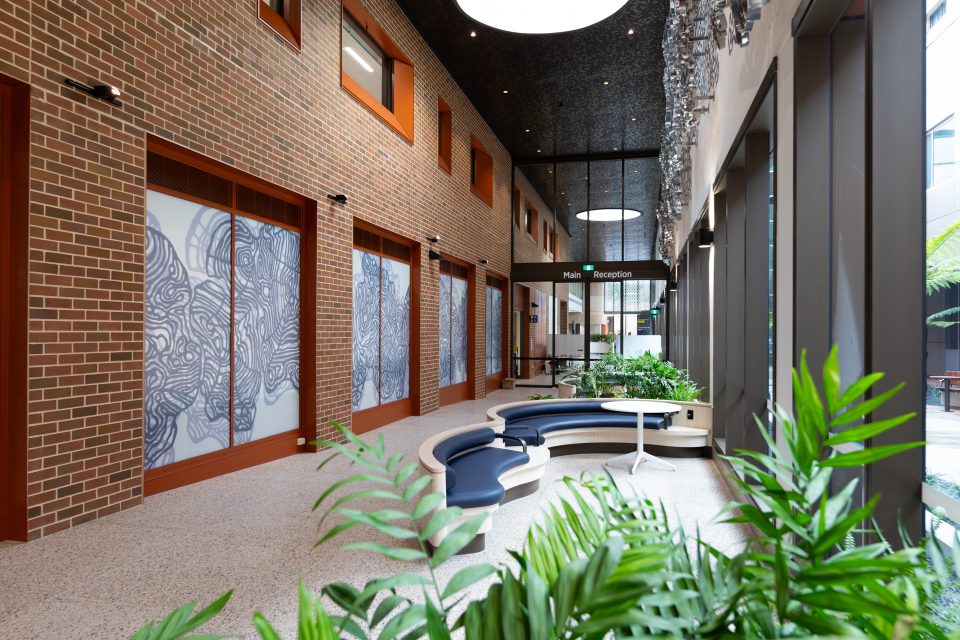
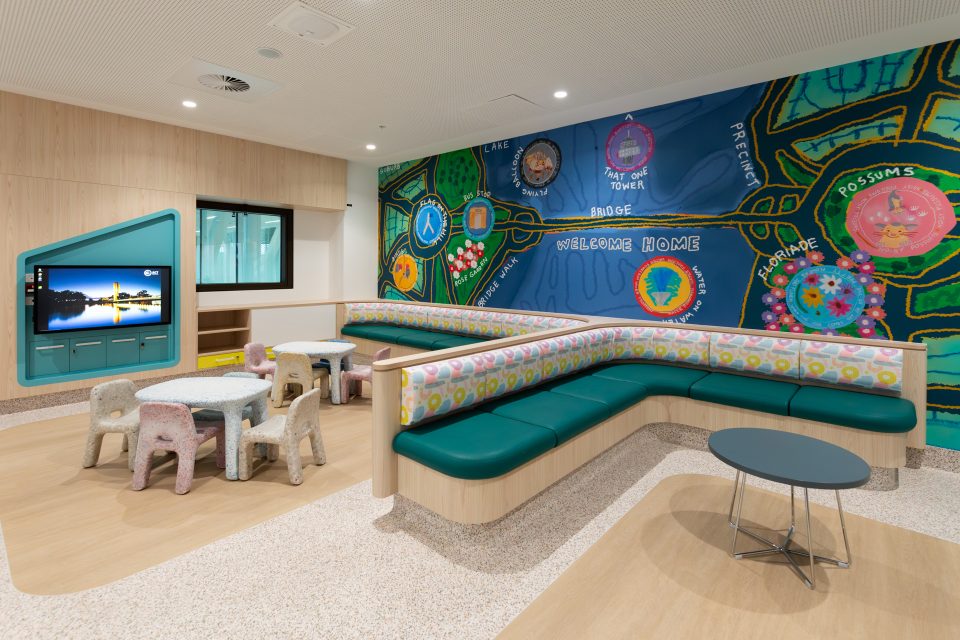
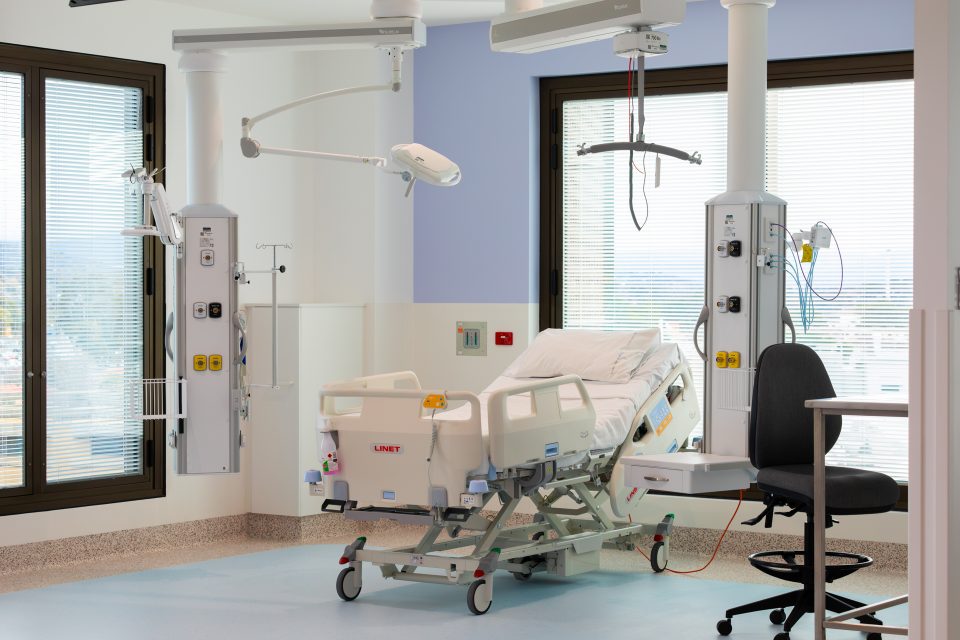
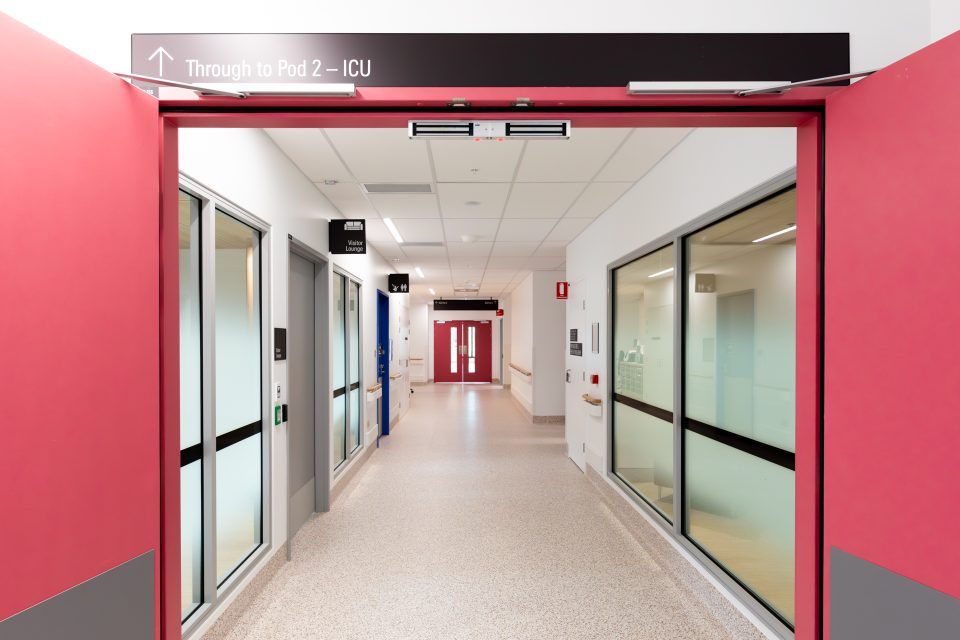
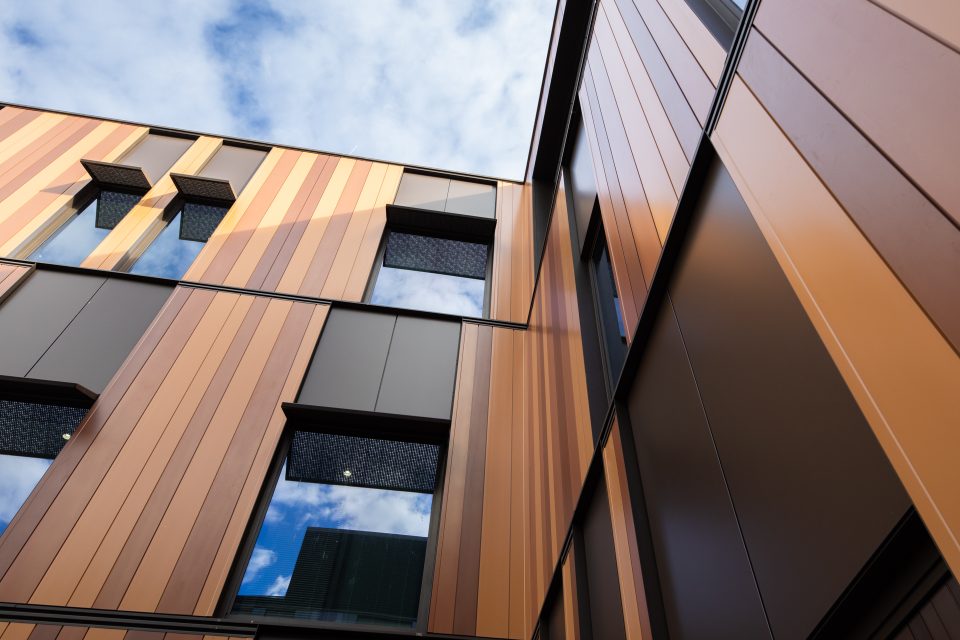
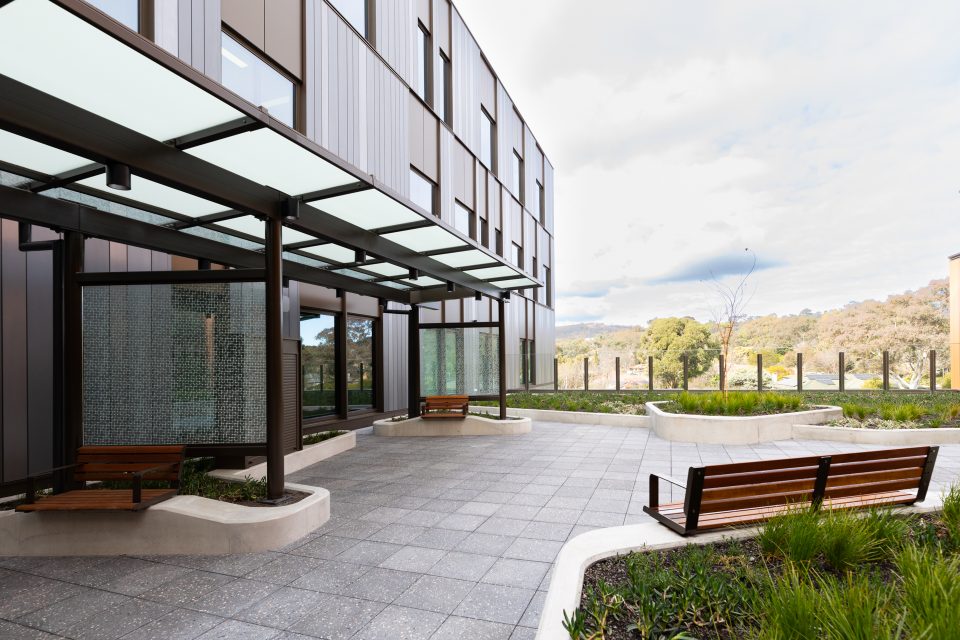
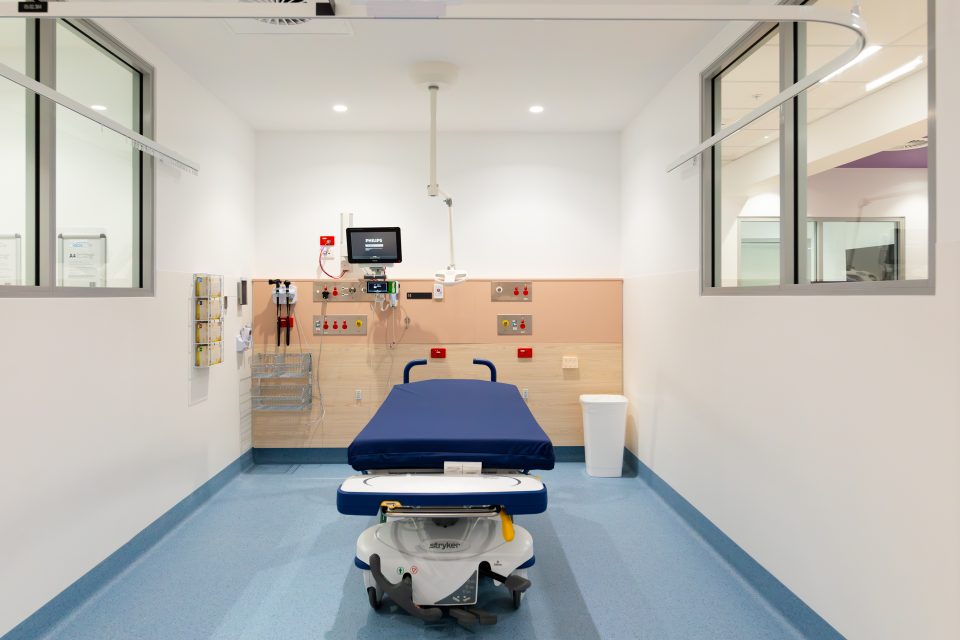
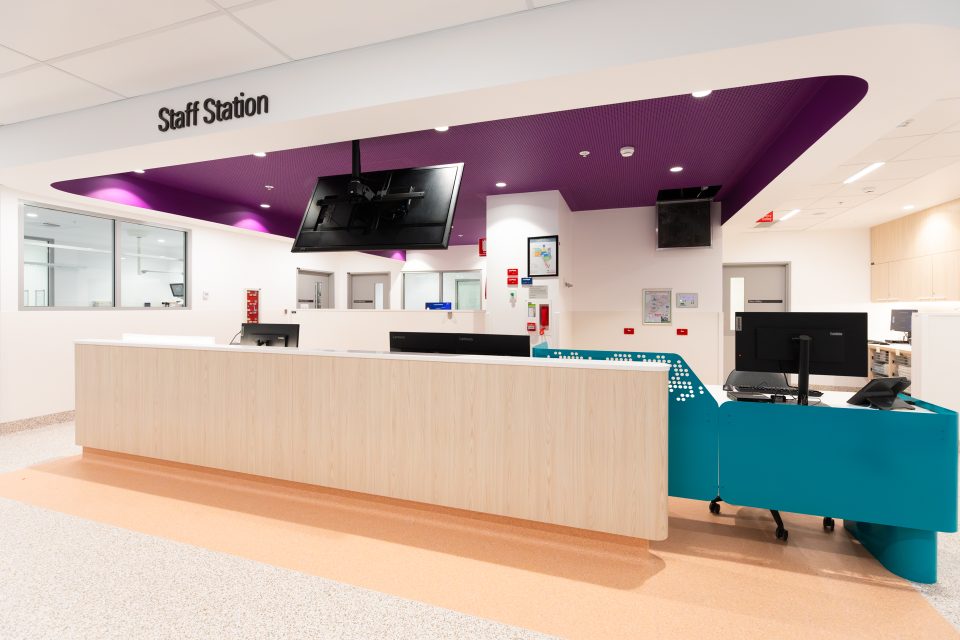

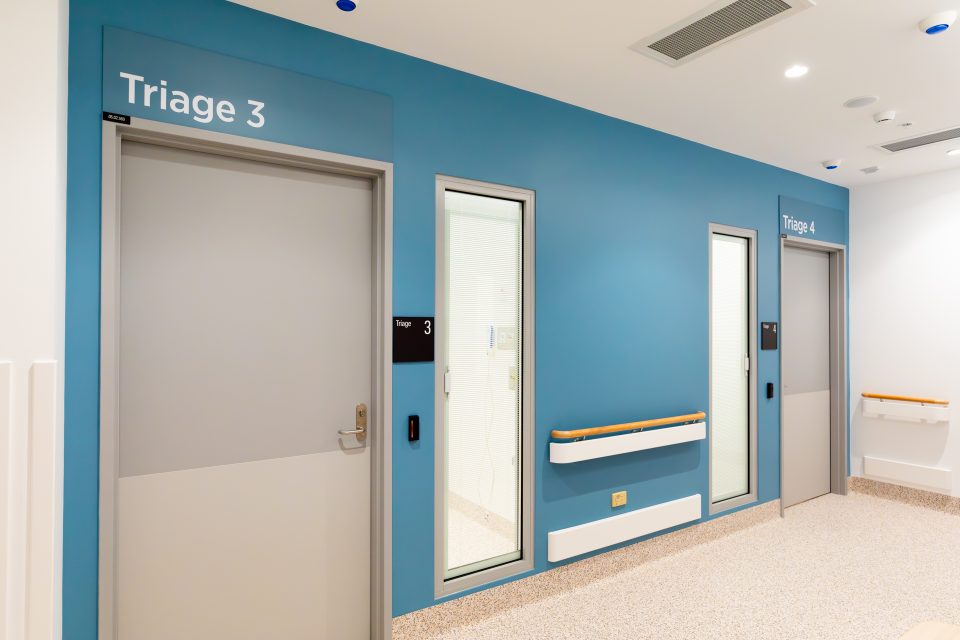
Health Minister Rachel Stephen-Smith said the new building would be a game-changer that would deliver modern state-of-the-art facilities for staff, greater capacity and an environment that would support healing, patients and families.
Ms Stephen-Smith said it would increase ED performance and boost the number of elective surgeries the hospital can do, two areas that for years have struggled.
Although the hospital expansion has been on the horizon since at least 2016, Ms Stephen-Smith said the long-awaited building had been completed on time and budget from the 2018 date when the site was selected.
She said additions had been made to the original proposal to provide a pandemic overlay as well as other improvements, such as hybrid theatres.
“The team has done an incredible job in delivering this complex project in a very structured and careful way, supporting the teams that have been working here, but also really working very closely with our consumer and carer representatives and our staff, clinicians and other staff to ensure that the building meets the needs of everyone who will be using it for decades,” she said.
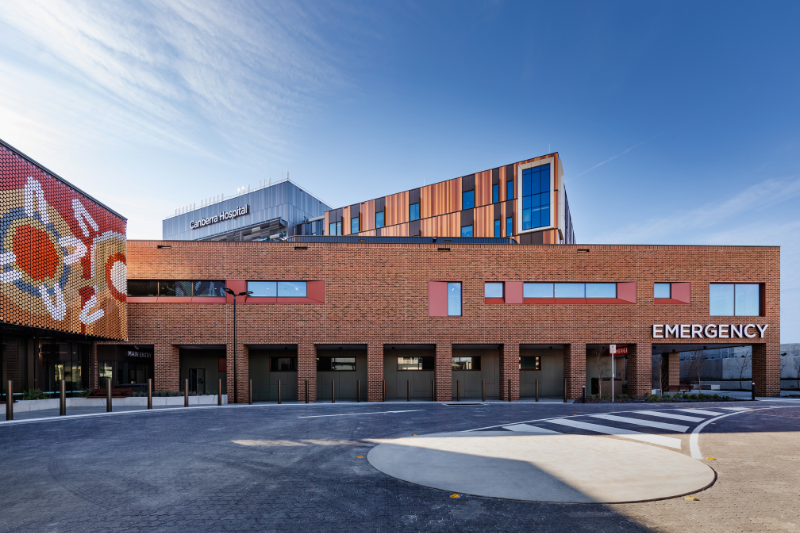
The new ED entrance at Canberra Hospital. It will open on 17 August from 7:30 am. Photo: ACT Government.
Ms Stephen-Smith said clinicians have been involved throughout the project, and their feedback has informed the design of the new facilities.
“They’re now looking at state-of-the-art equipment in their theatres, a bigger and more open intensive care unit, a bigger emergency department with a specialised pediatric emergency entrance and an area with incredible artwork to make kids feel safe as well,” she said.
“There has been some really detailed work over the last few weeks to just ensure that everything is in place.”
Ms Stephen-Smith said clinicians had been through the building to ensure that the facilities were fit for purpose and to understand the flow within and between services.
She said more than 4000 staff had been oriented and trained for the move, and there were many contingency plans in place to cover any hiccups, including simulations to ensure staff knew what to do.
Signs and traffic arrangements would be in place to guide the public to the new ED, although people were encouraged to go to North Canberra Hospital or a Walk-in Centre on the move-in day if possible to alleviate pressures.
Ms Stephen-Smith said attention was already shifting to other projects in the hospital master plan, such as the western entrance and Building 12, where two theatres would be maintained for the women’s, youth and children’s building and a new endoscopy suite would boost capacity to deliver those services.
“But also really importantly, in the old intensive care unit, we’ll be delivering a purpose-built palliative care ward, which is something that our consumer representatives have been talking to us about for a really long time,” she said.
Chief Minister Andrew Barr said the new building built on a decade of investment in health services and the next big step would be the new $1 billion northside hospital in Bruce.
“It achieves a number of important objectives, including significant increases in capacity in emergency and intensive care and theatre capacity. It delivers an all-electric facility that sets a benchmark for new hospital builds in this country,” he said.
Mr Barr said more measures to resolve ongoing parking issues would be forthcoming.












